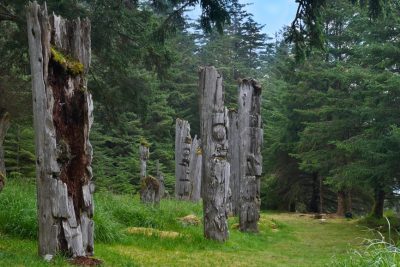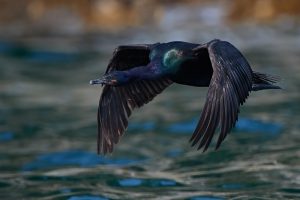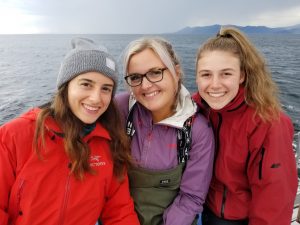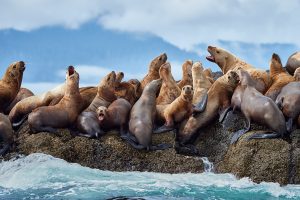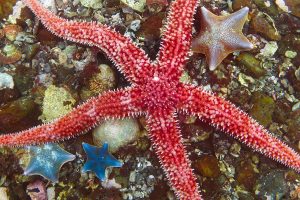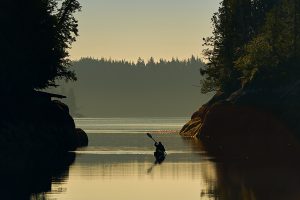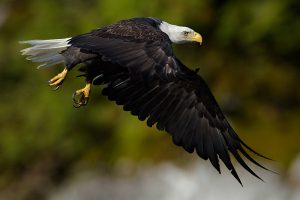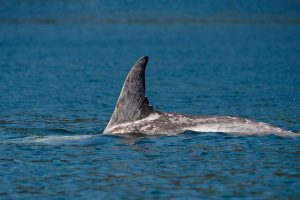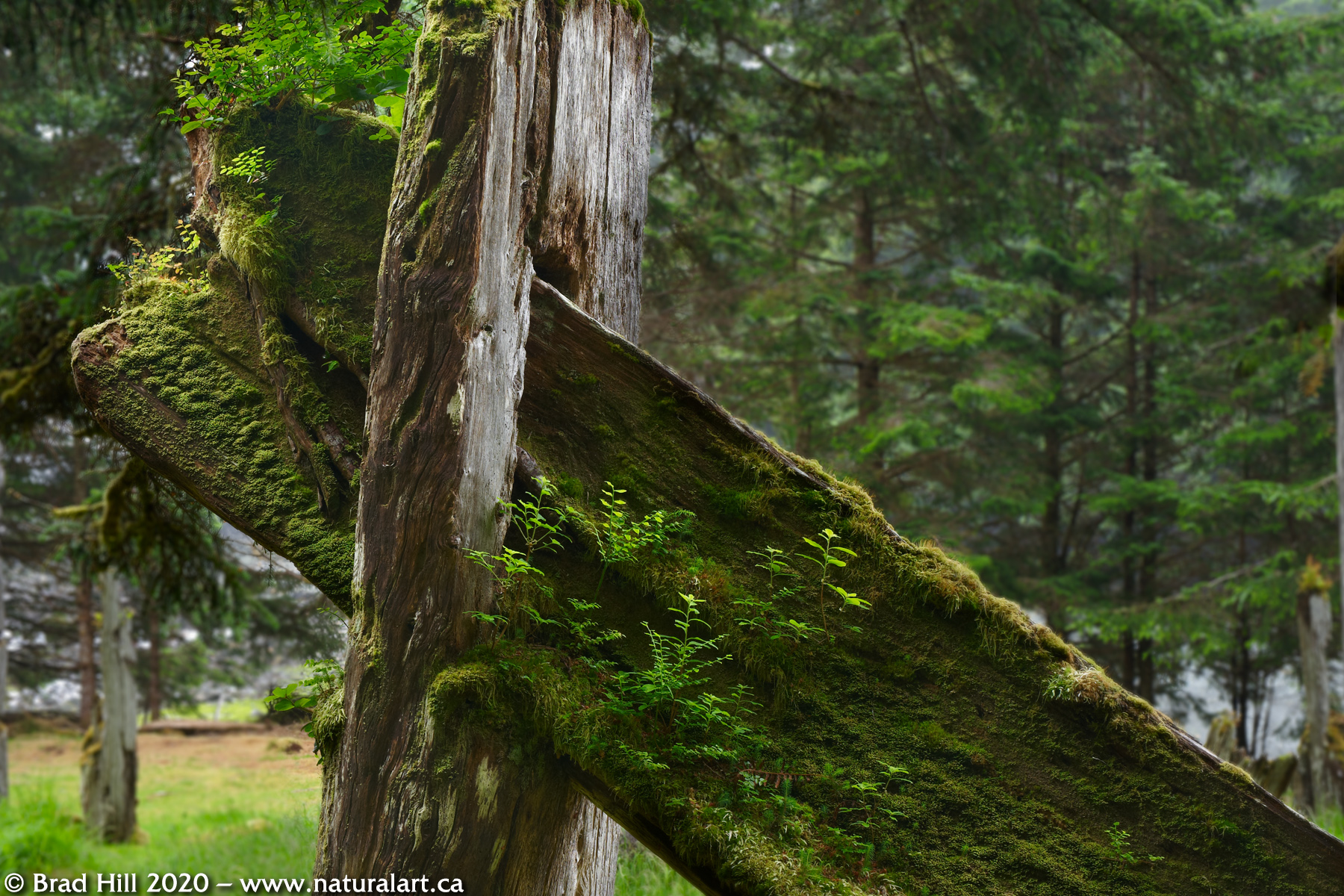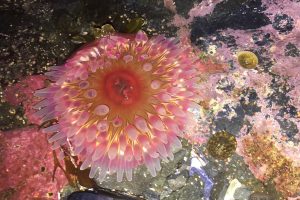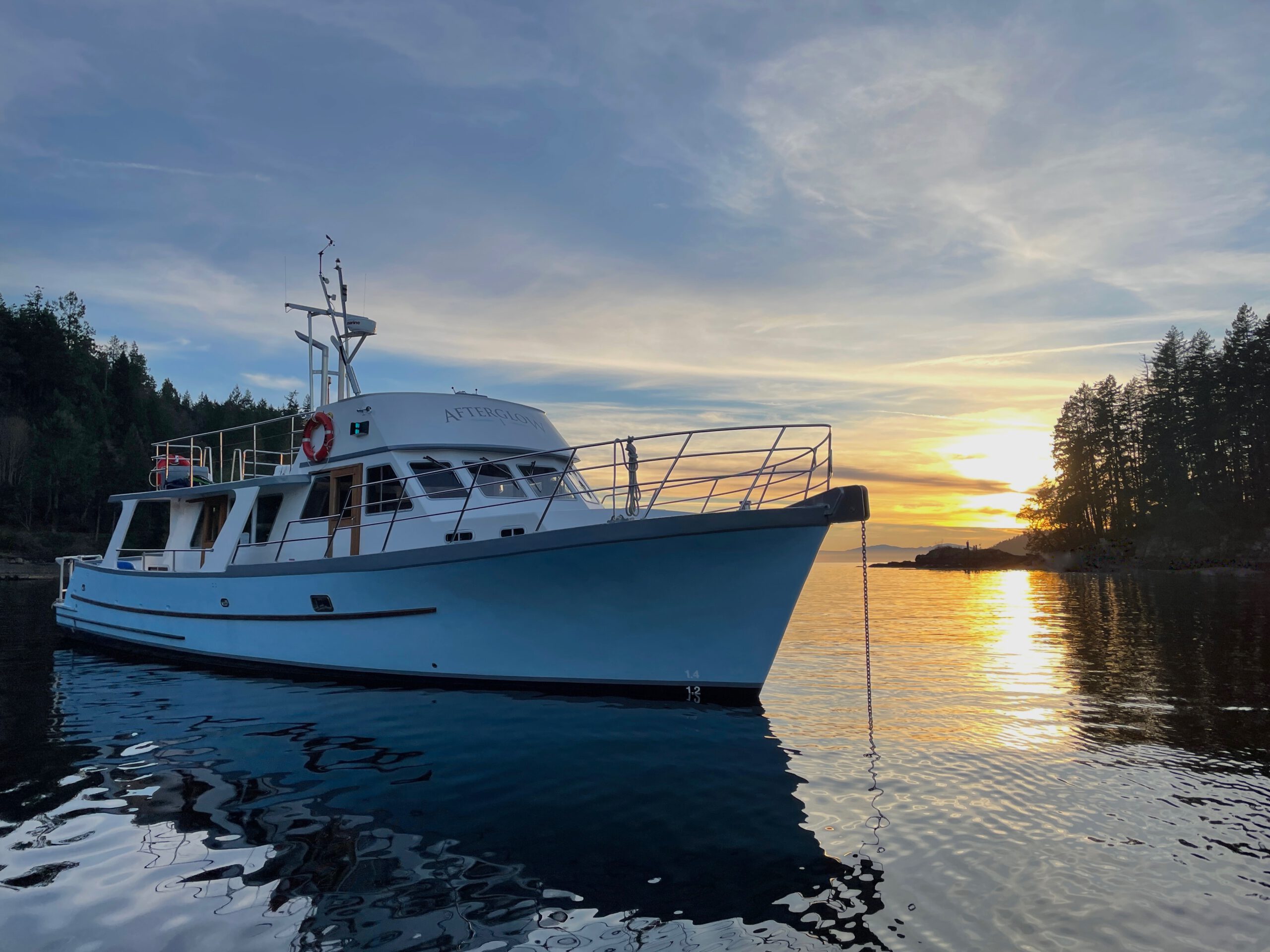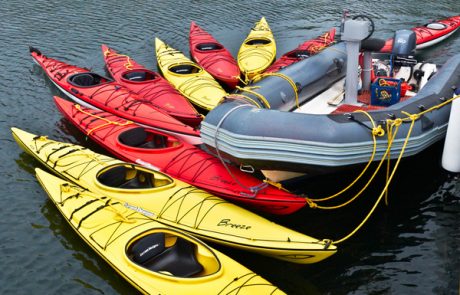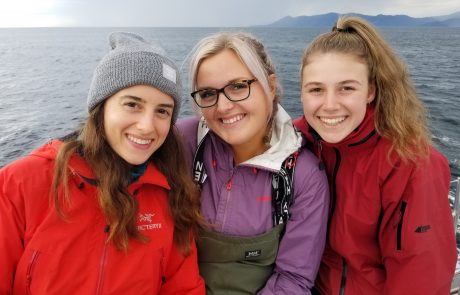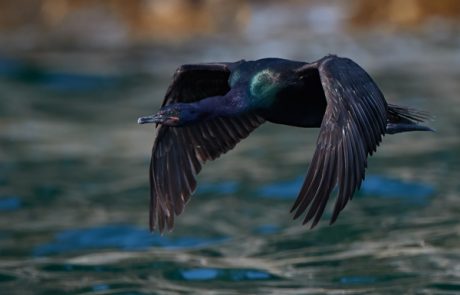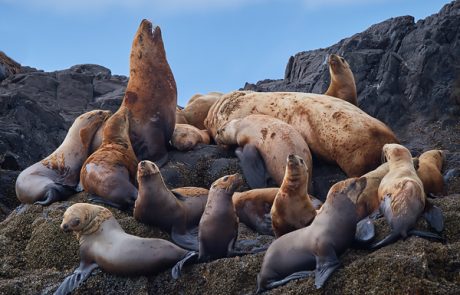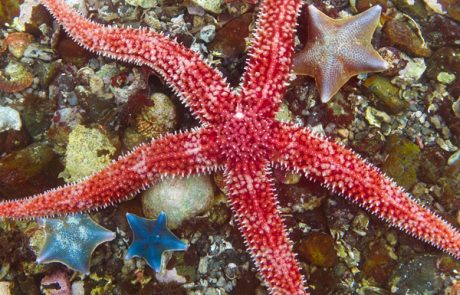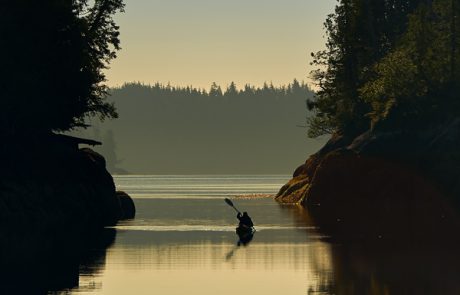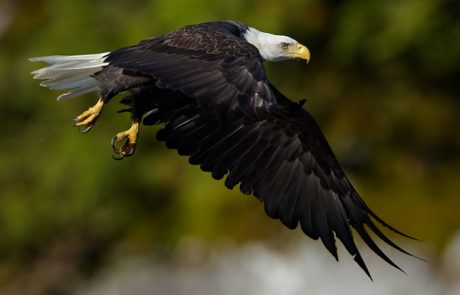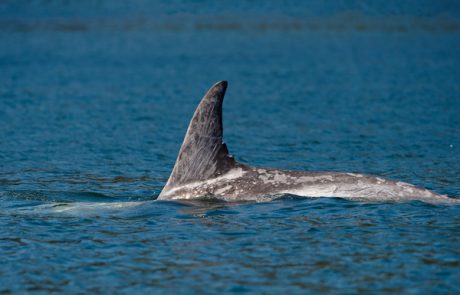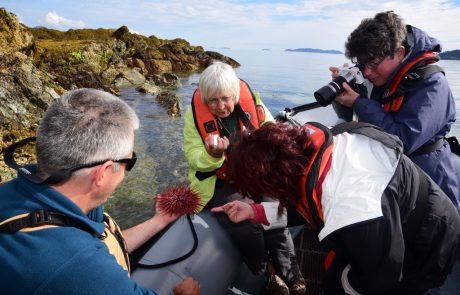Gwaii Haanas-Haida Gwaii
Join us for 7 days and 7 nights of adventure and good times in spectacular Gwaii Haanas National Park.
Thought by many to be the Galapagos of the North, this remote island chain off the northern coast of BC possesses a mix of biological and cultural treasures found nowhere else on earth. The southern half of this remote archipelago is a National Park and the riches of the temperate pacific marine zone are on display everywhere: towering forests of old-growth trees, carpets of thick moss, scenic bonsai bogs, sandy beaches, rugged rocky shores, diverse and colourful intertidal invertebrates and abundant and amazing marine mammals. Standing totem poles and longhouse remains at ancient village sites give evidence of Haida habituation from more than 10,000 years ago. Join us for a week-long adventure where each day is filled with unique coastal experiences, amazing light, and stunningly pristine wilderness.
The eco adventure trips aboard Afterglow I have something to offer everyone. We focus on wildlife viewing and both the natural and cultural history of the islands but our small group size allows us to design a trip that caters to each participant’s goals. We specialize in family excursions and photo tours but we also offer trips for individuals and couples.
Interested in a trip to Gwaii Haanas with a stronger focus on kayaking? We offer Unguided Mothership Kayaking trips in Gwaii Haanas – check out our Mothership Kayaking Trip page for more information or email us to find out which trips will give you the best opportunities to jump in a kayak!
Ocean Light Adventures has been operating tours in Haida Gwaii since 1979!
2025 Schedule: Gwaii Haanas National Park aboard the Afterglow I
June 26 – July 3
July 3 – 10
July 10 – 17
July 17 – 24
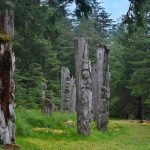
June 26 – July 3
July 3 – 10
July 10 – 17
July 17 – 24
Looking Ahead: Gwaii Haanas National Park Aboard the Afterglow I in 2026
July 1 – 8
July 8 – 15
July 15 – 22
July 22 – 29
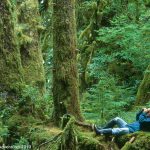
- 7 days, 7 nights
- 2026 cost TBD
- 2026 Brochure available: Autumn 2026
July 1 – 8 • July 8 – 15
July 15 – 22 • July 22 – 29
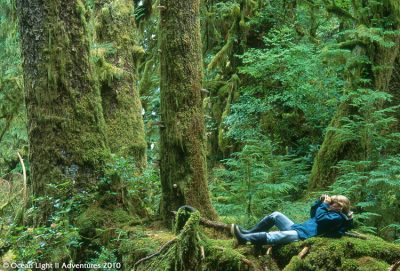
7 days, 7 nights • 2026 price TBD
2026 Brochure available: Autumn 2026
Background Information: Gwaii Haanas Cultural and Natural History
Haida Gwaii (formerly known as the Queen Charlotte Islands) is a long chain of islands off the northern coast of British Columbia. It has a very rich cultural and natural history and offers much to intrepid explorers!
Cultural History and Significance
Haida Gwaii sits about 120 km off the shores of the BC Mainland and is a place where land and sea are woven into Haida culture. Gwaii Haanas, a national park at the southern end of Haida Gwaii, is a wilderness of over 1800 islands and inlets. The San Cristoval Mountains form the backbone with peaks up to 1200m in height. Gwaii Haanas is surrounded by 1700 km of shoreline, on the west coast surf batters the rugged shoreline and the gentler east coast offers more protection.
Haida Gwaii is believed to have been a crucial place along the migration route of the first peoples inhabiting North America from Asia more than 10,000 years ago. During that time, sea level was 150 m lower than today and the Hecate strait was a grassy level plain connecting Haida Gwaii to the mainland.
Haida culture evolved living within the natural limits of the environment generation after generation. The Haida had a respect for all living things and this was demonstrated by the resiliency of the forests, fish and oceans. The land of the Haida was generous and the seas offered food in abundance and variety. The huge cedar trees were the life blood of the people supplying them with clothing, houses, utensils, baskets, fishing line, carved canoes and heraldic poles. It was not until the last century of European settlement and industrial development that the land and seascape was significantly altered.
The oldest known site of Haida occupation was unearthed on the shores of Gwaii Haanas and there is archeological evidence that fishing and ocean gathering activities took place more than 6000 years ago. When Europeans first arrived they found thousands of Haida living throughout the islands in villages of large wooden houses. These thriving villages were decimated by diseases such as smallpox that were introduced by the Europeans. By 1860 less than 1000 Haida survived and they regrouped in the northern villages of Skidegate and Old Massett.
The Haida had lived in harmony with the sea otter for many years, taking what they needed but never too much. Following contact with Europeans a significant hunt was developed to accommodate the world-wide demand for the otter pelts. Tragically the otters were extirpated by the late 1800’s.
With the establishment of the colony of BC in 1858 many industries moved in to extract the wealth of the islands: mining, logging, fishing and whaling, saw mills, salteries, and canneries. Extensive logging of old growth forests in the 1970’s and 1980’s sparked dissent which ultimately led to the establishment of Gwaii Haanas National Park, in the southern half of the archipelago. Between 1988 and 1992 the Government of Canada joined with the Council of the Haida Nation to manage the area. In 1993, an agreement was signed, both parties agree that “long-term protective measures are essential to safeguard Gwaii Haanas as one of the world’s great natural and cultural treasures, and that the highest standards of protection and preservation should be applied.”
Today Gwaii Haanas is jointly managed by Parks Canada and the Haida. The Haida started the Watchmen Program, in which Haida people live at the major village sites during the visitor season. Like their carved namesakes, the Watchmen protect the now-deserted but still fascinating and culturally significant villages of their ancestors. These villages still bear the totem and mortuary poles of the past residents as well as the remnants of their longhouses and other dwellings. One ancient village on Sgang gwaay island has received international recognition and is now known as the Ninstints Unesco World Heritage Site.
In 2013 The Gwaii Haanas Legacy Pole was raised in Windy Bay. It is the first momumental pole to be erected in the Gwaii Haanas area in 130 years. It was in Windy Bay in 1985 where a standoff took place to end clear-cut logging of the Haida ancestral lands. Now in Windy Bay, the pole stands tall and gazes over the Hecate Strait. The carved crests tell the story of how first conflict, then cooperation, saved Gwaii Haanas for future generations.
In relatively sheltered bays, estuaries and heads of inlets you may see a forest green blanket of long blades of grass just under the surface. These eelgrass meadows are more common on the eastern side of Gwaii Haanas and are critical habitat for a large number of living things, including many species of fish (salmon, rockfish, herring, cod and more) which use these areas as nurseries. And, these species of fish act as forage for many other species, including Great Blue Herons, black bears and other small mammals.
Once one moves just offshore and away from the land/sea transitional zones there are an equally diverse number of habitats which help foster species diversity. Beds of sand, mud, and gravel are the most common habitat found in the ocean. In these areas seaweed is common down to a depth of about 20 meters, and many species of small fish depend on the seaweeds, attached animals and scattered rock for both food and shelter. Subtidal sandbeds provide critical habitat for Pacific sandlance and various flatfishes (including sole, flounder and halibut) frequent the sandbeds. Invertebrates living in the sediments include butter clams, horse clams, shrimps and tubeworms.
Submerged rock reefs are home to an even greater diversity of species than the surrounding areas. The high number of invertebrates and seaweed in the reefs draw in many species of fish, including sablefish, lingcod, and rockfish.
While the terrestrial regions of Gwaii Haanas are dominated by temperate coastal rainforest, the sea possesses its own forest – the kelp forest. These forests are considered to be one of the most productive ecosystems on the planet. In the Gwaii Haanas marine area the kelp forests extend from the lower intertidal zone down to approximately 10 meters (about 33 feet). Many animals, such as abalone, inshore rockfish, kelp crab and sculpin spend the majority of their lives within the kelp forests. Other species, such as salmon, sablefish, and herring take advantage of kelp forest shelter during the early stages of their life.
Kelp forests are extremely dynamic and their distribution is influenced by a large number of factors, including water temperature and nutrient levels. The current distribution of kelp forests in Gwaii Haanas belies a fascinating story of species interdependence and how man’s actions can inadvertently cause a ripple effect through an ecosystem. Prior to 1900 the kelp forests of Gwaii Haanas were home to large numbers of sea otters. The sea otters consumed large numbers of red sea urchins and many believe that this act of predation controlled the abundance of the urchins. The sea urchins, in turn, consume kelp. Between the late 1700’s and around 1900 the sea otters of Haida Gwaii were heavily hunted for their exquisite fur and were eventually extirpated (made locally extinct) from the region. The removal of the sea otters allowed the urchin populations to soar and kelp forests were decimated. It is thought that the populations of other shellfish, including abalone, also increased after the otters were extirpated. This increase in shellfish abundance lead to the development of commercial shellfish industries where red sea urchins, abalones and geoducks were harvested.
In recent years sea otters have just begun to make their way back to Gwaii Haanas, with the first confirmed sighting taking place in the summer of 2001 near Ninstints, where a lone sea otter was spotted and photographed munching on a sea urchin. Will the sea otters recover and bring a return to a more “natural” state with abundant kelp forests? The answer is unclear. There’s at least one other – and now extinct – player in the kelp forest affair – the Steller’s Sea Cow. This large aquatic mammal, which grew up 10 to meters in length, was a surface-dwelling kelp grazer. By 1768 the Steller’s Sea Cow was hunted to extinction – it’s believed this was due partly to hunting by aboriginals and partly by hunting by Europeans. Some even argue that the reduction in sea otter numbers and the consequent reduction in kelp forests by sea urchins helped contributed to the demise of the Sea Cow! Regardless, the actual historical ecological impact of the Steller’s Sea Cow on the kelp forests is unknown, as is how the return of the sea otter (in the absence of the sea cow) will affect urchin populations and thus the kelp forest. Only time will tell.
The diverse assemblage of marine mammals of Gwaii Haanas draws many visitors to Gwaii Haanas. A full 20 species of cetaceans (whales, dolphins and porpoises) are known to use the waters of Gwaii Haanas. In spring and summer humpback whales are often seen along the east coast. White-sided dolphins in pods of up to several hundred may be encountered. Both resident and transient orcas (or killer whales) can be seen traveling, feeding, and spy-hopping. Small groups of Minke whales, Dall’s porpoises and harbour porpoises are frequently seen. Fin whales can be seen off the southern tip of Gwaii Haanas and on the west coast the lucky spotter may see humpback, sperm and even blue whales. And, harbour, elephant and fur seals are commonly seen, as are both Steller and California sea lions. Although currently extremely rare, it is also possible to see sea otters!
Natural History – The Galapagos of the North
The biology and natural history of Haida Gwaii and Gwaii Haanas is equally as interesting as its cultural history. A few of the most noteworthy headlines include:
• About 750,000 seabirds breed within Gwaii Haanas
• The highest number of eagle nests per kilometer of shoreline in Canada occur here
• The highest breeding density of Peregrine falcons in the world are in Gwaii Haanas Park
• Gwaii Haanas harbours the largest breeding colony of Steller Sea Lions on the west coast
• Burnaby Narrows in Gwaii Haanas Park contains the highest levels of living material
(biomass) of any intertidal zone in the world
• Grey, Humpback, Minke and Orca whales all inhabit the waters of Gwaii Haanas and are
frequently seen
• Fin whales may be encountered off the southern tip of Gwaii Haanas
• Sperm and rare Blue whales may even be encountered (most commonly along the western coast)
• The land contains a minimum of 39 distinct sub-species of plants and animals found nowhere else on
earth, including 7 endemic mammal species and 3 endemic bird species
• 15 species of stickleback fish inhabiting Haida Gwaii are found no where else on earth
Both the marine and terrestrial species assemblages of Haida Gwaii are unique and both have been shaped to their present stunning state by both natural forces and the hand of man.
MARINE ECOSYSTEMS – STUNNING DIVERSITY!
The waters surrounding Haida Gwaii are home to an amazing array of life forms, including
• 2503 species of invertebrates
• 400 species of fishes
• 344 species of seaweed
• 125 species of birds
• 43 species of lichens
• 37 species of mammals
• 4 species of seagrasses
• 1 species of reptiles
The key to this amazing marine diversity is the presence of a tremendous variety of habitat types. While the more rugged western coast is often battered by heavy seas, the eastern coast is more sheltered and offers a greater array of habitat types. The transitional zone from land to sea is a place where many species thrive, and within Gwaii Haanas this transitional zone is highly varied.
Estuaries and salt marshes, while rare in Gwaii Haanas (at just 6% of the coastline), trap and recycle nutrients and help fuel the plant plankton (phytoplankton) that are so critical to life adjacent to the shore.
Shorelines made up of a combination of sand, mud, gravel, and cobbles are more common (at 19% of the coastline) and are home to different species than those found within the estuaries. Invertebrates, such as small crabs live within the rocks and many forms of life burrow deep into the sand and mud. The miles of pure sand beaches often appear to be relatively lifeless, but most of the lifeforms lie within the sand and include clams, sand dollars, purple olive snails, sea stars, moonsnails and more!
FAQ about Afterglow I Gwaii Haanas trip
All of our tours offer excellent photographic opportunities. Our photography tours are very similar to our standard tours but to accommodate the additional gear of photographers – and to maximize shooting angles from our inflatable boat – they are limited to fewer participants (normally 6 clients plus the photography guide).
Yes we request that you stay within the suggested weight limits. We choose to use float planes to transport our guests to and/or from the boat but the planes have weight restrictions. Our fresh food is also brought in on the float planes. The Afterglow I, while being spacious, is still a boat and storage space for extra gear is always limited. Please follow the list of suggested clothing and equipment carefully and remember your stay on board is just 3 or 7 days. If your gear exceeds the weight limit it may get left behind or you may be charged for an extra float plane!
Yes, there are drying lockers on the aft deck where we hang all the wet gear each night to dry. In order to keep the inside of the boat dry and comfortable we do not bring wet gear into the main living area or cabins. Cotton clothing is not recommended as it takes a long time to dry.
Yes we offer mothership kayaking tours! These trips allow you to get more kayaking opportunities while enjoying the comfort of the Afterglow I. We will use the Afterglow I to transport you to great locations from which you can do a longer paddle. You will meet the Afterglow at a designated spot and you can then enjoy the luxury of the motor yacht, your own cabin and delicious meals.
No, there are not opportunities for kayaking on all our trips. Our Gwaii Haanas trips offer the best kayaking experiences as there are many different bays and coastlines waiting to be explored by kayak. Our North Coast Explorer trips also offer sheltered kayaking while the Afterglow I is at anchor.
Yes. In Gwaii Haanas and North Coast Explorer we will try fishing for halibut, lingcod, and salmon as well as crabs, when possible. On our Khutzeymateen and Great Bear Rainforest trips we will try fishing for Dungeness crabs and, if opportunities present themselves, for salmon and halibut. If you want to participate in fishing you must purchase a saltwater fishing license before you arrive at the boat.
No, there are no grizzlies on Haida Gwaii, but the black bears found there are among the largest on the planet. They feed on the rich intertidal zones and salmon and other food is always plentiful. The black bears are very tolerant as there is no hunting allowed in Gwaii Haanas National Park.
Hiking boots are not necessary on any of our trips – they are heavy and add to your overall weight. Every time you leave the Afterglow I and get into the zodiac to go ashore you will wear your rubber boots. For most people on the short distances we walk, rubber boots work well. When you are on the Afterglow I you need comfortable shoes with a non-marking sole to wear both inside and outside.
Yes, we HIGHLY recommend that you take trip medical insurance, trip cancellation insurance and trip evacuation insurance. Ask your insurance agent or your travel agent for options available to you. Your current policies may have a travel clause that covers you. Read the fine print to see what your coverage is in BC as a resident or non-resident. Thoroughly review the Ocean Light Adventures cancellation and refund policy on the website before you book your trip.
Yes, we can accommodate many dietary restrictions as long as we know about it in advance. We strive to serve healthy organic food, seafood fresh from the ocean (whenever possible), homemade soups, breads, salads and baked goods. We can take care of most of your food allergies, intolerances, likes or dislikes. If your needs are great, the cook will do their best to accommodate but be warned that the cook is just one person and serves a group meal that can be adapted slightly to meet the needs of individuals. The cook can not make 8 individual meals. If your dietary needs are many, this may not be the trip for you. Please contact us in advance of booking to discuss.
Please do not bring a tripod on our Khutzeymateen trips, there will be no opportunity to use it as all shooting is done from the inflatable and it is too heavy to bring on the float plane. On all other trips, you can bring a tripod and it may be useful in certain situations. Note that on many of our trips we follow the bears’ daily activities and therefore move about quite a lot- a beanbag can be useful when shooting from the zodiac. On the Great Bear Rainforest trips, we utilize bear viewing stands on the edge of the river and tripods will be useful. On the North Coast Explorer trip it is good to have a tripod to set up on the deck of the Afterglow I to photograph the various marine mammals.
Yes, the boat has a number of regular household outlets for charging batteries. Other electrical appliances such as hair dryers can be used but may need the generator so check with the crew before using.
Yes, you can bring a laptop. The boat has an inverter with 120V AC power at all times. Remember we have strict weight limits on the float planes so choose your gear wisely.
Ocean Light Adventures offers trips that are fantastic for families. We are a family run company and are always willing and excited to get family groups on board. Gwaii Haanas National Park on Haida Gwaii and the North Coast Explorer are amazing family destinations because of the variety of activities available and the small distances needed to travel. As well, the wildlife is incredible and the opportunities for active pursuits such as kayaking, hiking, fishing and exploring are unsurpassed.
Our absolute maximum group size is 9, however we prefer to run trips with 6-8. This small group size is favourable because it creates a more intimate setting and makes it easier to move as a group.
No, we do not charge a single supplement. However you will most likely have to share a cabin (two separate bunks) with another guest of the same gender, or you may be lucky and get a cabin to yourself, it all depends on the make-up of the other guests.
Ocean Light Adventures has been in operation on the BC Coast for over 30 years and our experience and expertise in the areas that we visit is unsurpassed. We keep our groups small and intimate so that we can move about in our wilderness settings more efficiently and safely. Our boat, the Afterglow I is a beautiful, spacious and comfortable yacht and it is expertly maintained and fully equipped. We have passionate, experienced, professional crew who will make sure your trip is an amazing one.


